The beginning of spring, by which I mean the arrival of the rainy season, is one of my favorite times of year here in south Florida. The damselflies and dragonflies are out in significant numbers again, dotting the grasses and trees searching for food. Earlier this week there were dozens of dragonflies cruising the back yard, among them some pretty Needham’s Skimmers and the eye-catching little pennant, Celithemis eponina, commonly known as the Halloween Pennant for its festive orange and black (well, a brown so dark that people call it black, like my dad’s hair back before he became a silverback) colors.
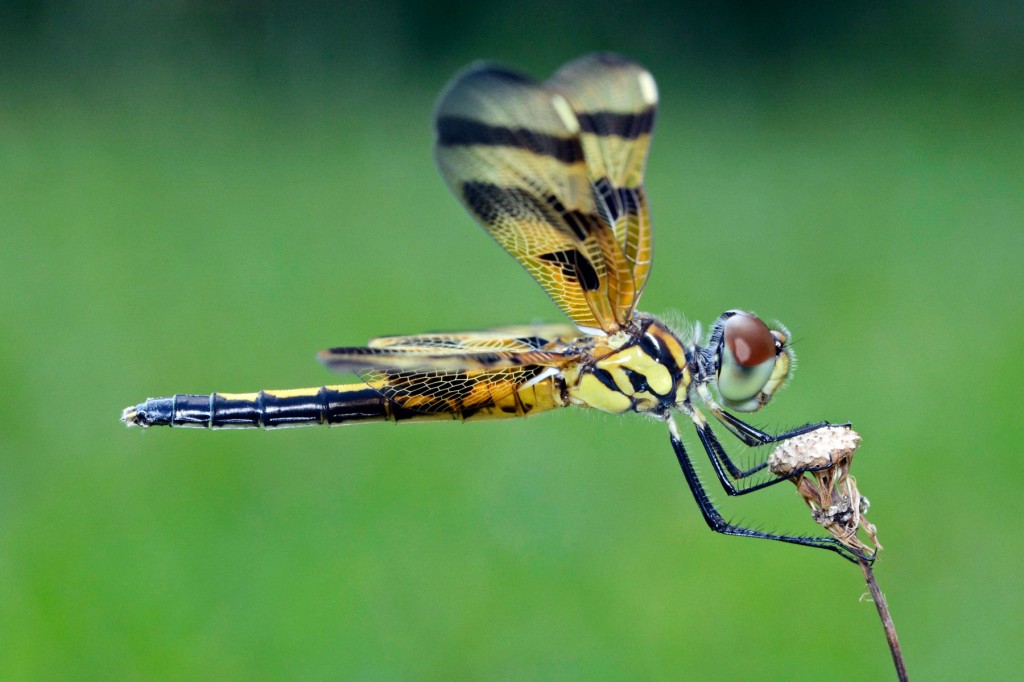
This is one of the smaller dragonflies around, though nowhere near as small as the diminutive Little Blue Dragonlet that is also rather common in our back yard at this time of year. It’s also, like its cousin the Blue Dasher, rather confiding. It’s not too difficult to sneak up rather close to one, which can result in some rather pretty photos:
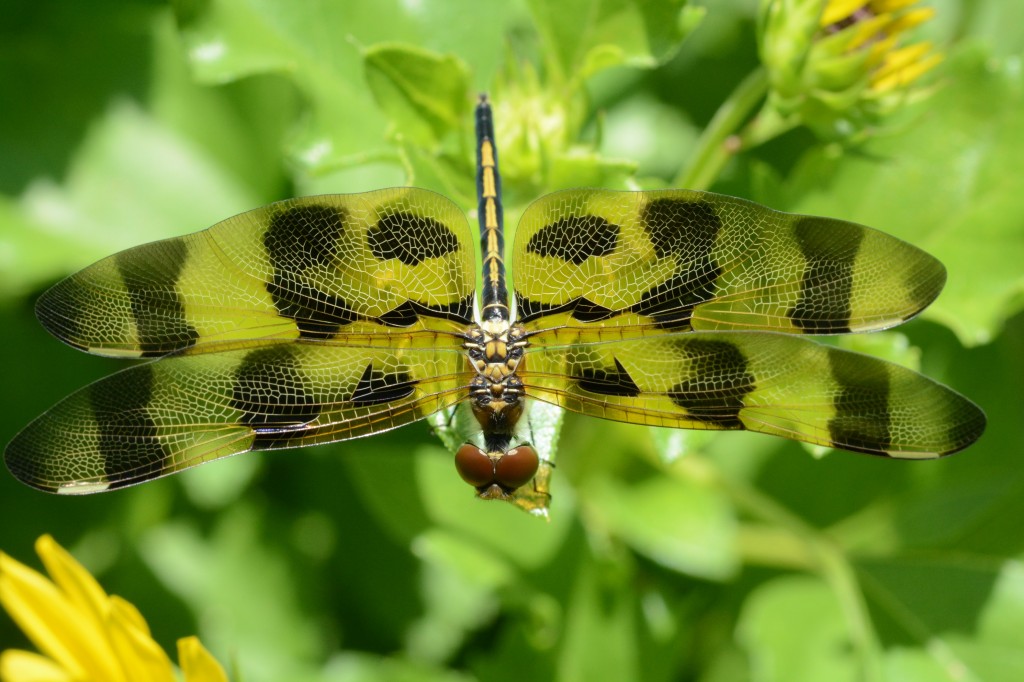
It has some characteristic poses, as well. It likes to perch with its head and abdomen well below its thorax, as you might be able to tell from the picture above (notice how the wings are in focus, the head is slightly out of focus, and the abdomen gets progressively blurrier as you look toward its tail?).
The picture above also lets you know that this, like most of the dragonflies hanging out in a suburban back yard not on water suitable for reproduction, is a young dragonfly. If it’s a male, that broad yellow stripe down its back will gradually turn reddish-orange as he ages; if it’s a female, the dark sides of the abdomen will turn “pruinose” or powdery white.
The characteristic “pennant” poses that give this dragonfly its name become even more obvious in other situations, though, such as when it has all of its wings compensating for the breeze attempting to shake it off the rather flimsy perches it affects:
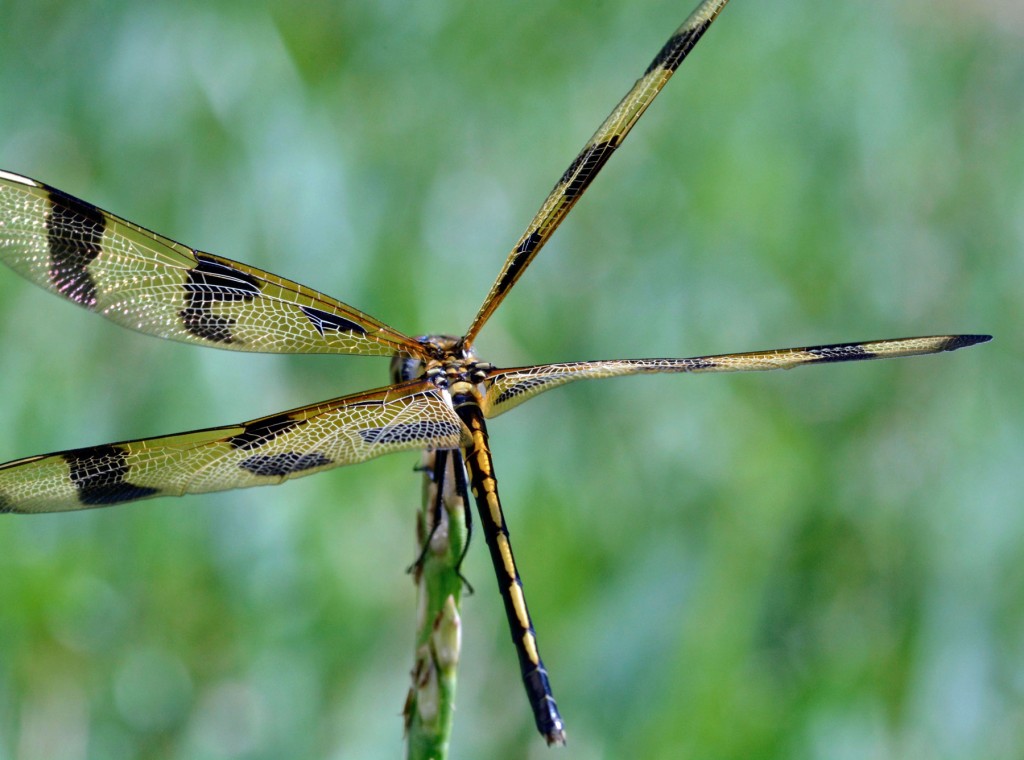
But what truly makes it a photographer’s dream is its willingness to allow a close approach:
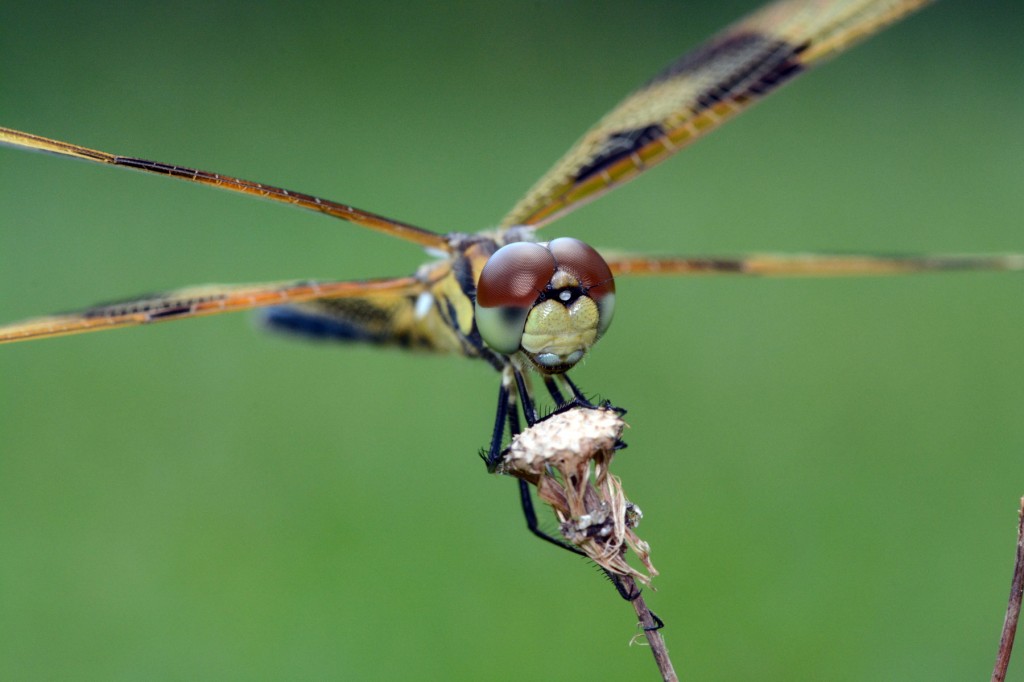
The shot above was from about a foot away; such a close approach lets you crop and enlarge to your heart’s content. So for those of you who just can’t get enough of those cute little dragonfly faces, here’s another one for you:
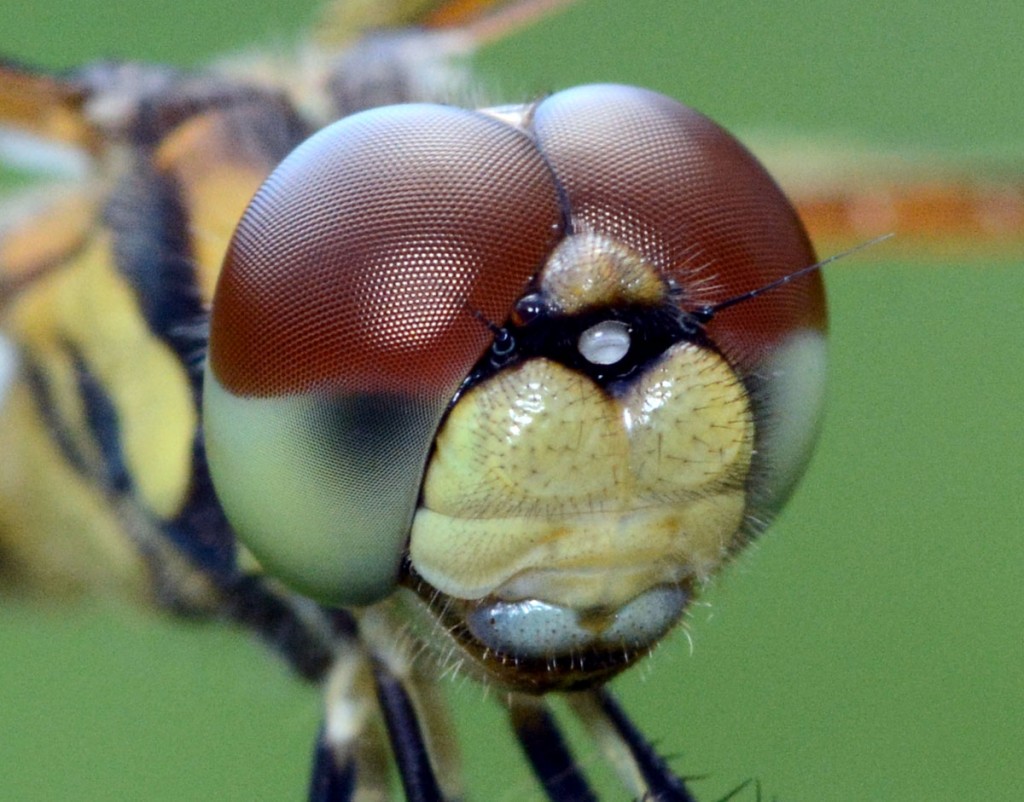
Etymology
The genus name, Celithemis, is a combination of the Greek words kelis, spotted (referring to the wing spots on most members of the genus), and themis, law, decree, order, presumably because this genus can be “ordered” or classified according to the pattern and number of spots on the wings, which are diagnostic.
Eponina, the specific name, was the wife of Julius Sabinus, a Gaulish chief who attempted to overthrow the Roman occupation and was forced to flee, enduring a decade of privation and hardship, alleviated only by the devotion of his wife. When they were finally captured and sent to Rome, Vespasian executed Sabinus, and Eponina asked to be executed as well, a request that was granted. Plutarch called this the darkest deed of Vespasian’s reign, “there was nothing during Vespasian’s reign to match the horror of this atrocious deed, and that, in retribution for it, the vengeance of the gods fell upon Vespasian, and in a short time after wrought the extirpation of his entire family.”
The English name for this genus, the pennants, is also descriptive: it refers to their habit of perching, flag like, on vertical stems. And, if you’ll recall, pennants are small flags, appropriate because most species in this genus are rather small.
References
Paulson, D. R., and S. W. Dunkle. (2012). A Checklist of North American Odonata, including English name, etymology, type locality, and distribution. Available online at http:odonata.bogfoot.net/docs/NA_OdonataChecklist_2012.pdf
Paulson, D. (2011). Dragonflies and Damselflies of the East. Princeton: Princeton UP.
